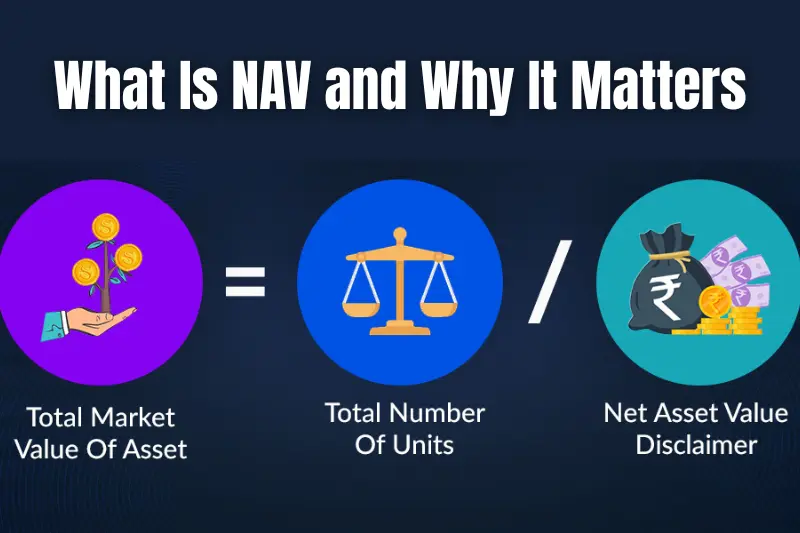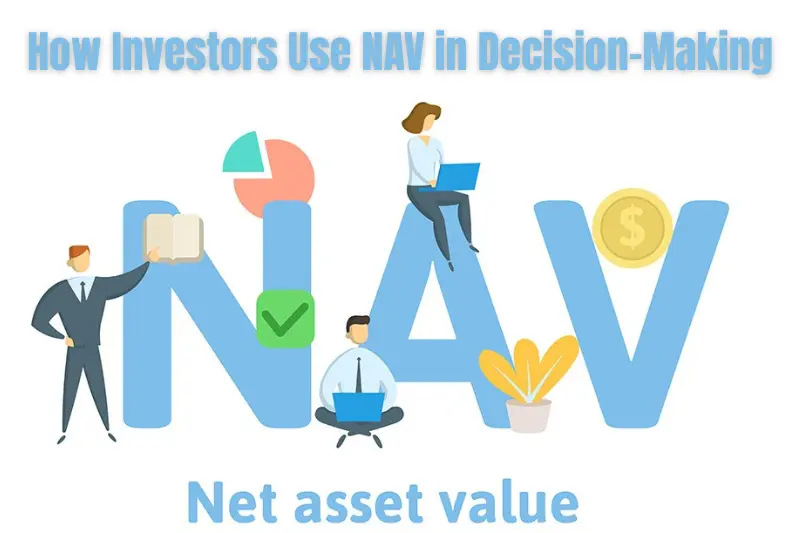Have you ever heard the term nav finance and felt confused? Don’t worry—you’re not alone. Many new investors struggle to understand what it means and how it works. But the good news is, it’s actually simple once you break it down.
In this blog post, we’ll explain nav finance in an easy way, using real-life examples and simple steps. By the end, you’ll know exactly what it is, why it matters, and how you can use it to make smart money decisions.
What Is NAV and Why It Matters

NAV stands for Net Asset Value. It shows the value of one unit or share of a mutual fund or investment. It helps investors know the actual worth of their investment.
What Is NAV?
NAV tells you the price of one unit in a mutual fund.
- NAV means Net Asset Value, used in mutual funds and ETFs.
- It shows the per-unit value of a fund after subtracting costs.
- You can think of it like the price tag on each unit of a fund.
- NAV is updated daily based on the total value of assets.
How NAV Is Calculated
It uses a simple formula to find the per-unit value of a fund.
- Formula: (Total Assets – Total Liabilities) ÷ Total Units
- Total assets include stocks, bonds, and cash in the fund.
- Liabilities are things the fund owes, like fees or expenses.
- The result shows the real value of each unit of the fund.
Why NAV Matters to Investors
It helps you track the value and growth of your investments.
- NAV tells you how much your mutual fund units are worth today.
- You can compare NAV over time to see how the fund is growing.
- It’s useful for tracking performance, not for predicting it.
- NAV helps you decide when to buy or sell fund units.
You may also like it:
Personal Finance Guide: Tips for Financial Success
Smart Home Trends: Top Innovations for 2025
Easy Budgeting Tips: Manage Your Money Smartly
How NAV Is Calculated
NAV is calculated using a simple formula. It tells you the true value of one unit in a mutual fund by subtracting the fund’s expenses from its total assets.
Basic Formula for NAV
The formula is easy to remember and use.
- NAV = (Total Assets – Total Liabilities) ÷ Total Outstanding Units
- This gives the value of one unit of the fund.
- Fund companies calculate NAV every business day.
- It’s updated at the end of each trading day.
What Are Total Assets?
These are all the investments and cash the fund owns.
- Includes stocks, bonds, cash, and other securities.
- Also includes dividends the fund has earned but not paid.
- Total assets show the complete value of everything the fund holds.
What Are Liabilities?
These are the fund’s costs and money it owes.
- Includes management fees, operating expenses, and other costs.
- Liabilities reduce the fund’s value before dividing by units.
- The lower the liabilities, the higher the NAV can be.
What Are Outstanding Units?
These are the total number of fund units sold to investors.
- Think of them like slices of a pie—NAV shows the value of each slice.
- The more units the fund has, the more it spreads the value.
- NAV helps investors know what each unit is worth today.
NAV in Mutual Funds and ETFs
NAV plays a key role in mutual funds and ETFs. It helps investors understand how much each unit of the fund is worth at the end of the day.
NAV in Mutual Funds
NAV shows the per-unit value of a mutual fund after daily expenses.
- Mutual funds are bought and sold based on the daily NAV price.
- The fund company calculates NAV once a day—after markets close.
- Investors use NAV to track fund performance over time.
- NAV reflects the total value of the fund’s assets minus costs.
NAV in ETFs (Exchange-Traded Funds)
NAV is used in ETFs but works a little differently.
- ETFs also have a daily NAV, just like mutual funds.
- But ETFs are traded on stock exchanges throughout the day.
- Their market price can be above or below the NAV.
- NAV helps investors check if the ETF is overpriced or underpriced.
Key Differences Between Mutual Funds and ETFs Using NAV
Understanding the difference helps you make better choices.
- Mutual funds are bought/sold only at the NAV price.
- ETFs can be traded any time during market hours at market price.
- ETFs may trade at a premium or discount compared to NAV.
- NAV in ETFs is a guide, not always the exact trading price.
Why This Matters to Investors
Knowing how NAV works helps you invest smarter.
- NAV helps you see the real value behind your investment.
- It prevents you from overpaying or expecting false returns.
- For mutual funds, NAV is the exact price you pay.
- For ETFs, compare NAV with market price before buying.
Common Myths About NAV
Many investors have wrong ideas about NAV. Knowing the facts can help you avoid mistakes.
Myth 1: Higher NAV Means Better Investment
Some think funds with higher NAV are always better.
- A higher NAV only means the fund’s unit price is higher.
- It does not show how well the fund performs.
- Performance depends on the fund’s growth over time, not NAV value.
- Compare returns instead of just NAV numbers.
Myth 2: NAV Predicts Future Returns
People sometimes believe NAV tells what the fund will earn next.
- NAV shows the current value, not future profits.
- Past NAV changes don’t guarantee future success.
- Investments always have some risk and uncertainty.
- Use other tools like fund history and ratings to decide.
Myth 3: NAV Is the Price You Always Pay
Some think buying at NAV is the same everywhere and all the time.
- For mutual funds, you buy at NAV, but only once per day.
- For ETFs, the market price may be above or below NAV.
- NAV updates daily; prices can change fast in the market.
- Always check the exact price before buying or selling.
Myth 4: NAV Includes Dividends Paid to Investors
Some confuse NAV with dividend payments.
- Dividends are paid separately from NAV.
- NAV usually drops by the dividend amount on the payout date.
- NAV reflects asset value, not cash payments to investors.
- Don’t expect dividends to raise the NAV value.
How Investors Use NAV in Decision-Making

Investors use NAV to understand the value of their investments and make smart choices.
Tracking Investment Value
NAV helps investors know how much their fund units are worth.
- By checking NAV regularly, investors can see if their investment is growing.
- It shows the current price per unit of the fund.
- Changes in NAV reflect gains or losses in the fund’s assets.
- Helps investors stay updated on their portfolio’s value.
Timing Buy and Sell Decisions
Investors use NAV to decide the best time to buy or sell fund units.
- Buying at a low NAV can mean a better entry point.
- Selling when NAV is high might lock in profits.
- NAV alone shouldn’t be the only factor; consider market conditions.
- Combine NAV with other data like fund performance and goals.
Comparing Funds
NAV helps compare similar mutual funds or ETFs.
- Investors can look at NAV trends over time to compare growth.
- Helps identify which funds are more stable or volatile.
- Don’t rely on NAV alone—check fees, management, and returns too.
- NAV shows value but not the full picture of fund quality.
Understanding Market Value vs. NAV
For ETFs, investors compare NAV with market price before investing.
- If the market price is above NAV, the ETF may be overvalued.
- If below NAV, it might be undervalued or discounted.
- This comparison helps investors avoid paying too much.
- Knowing this difference can improve investment decisions.
Tips for Beginners Using NAV
If you’re new to investing, these tips will help you understand and use NAV wisely.
Check NAV Regularly but Don’t Obsess
Keeping an eye on NAV helps you track your investment, but don’t stress over daily changes.
- NAV changes daily based on market value and fund expenses.
- Small daily changes are normal and don’t always mean big gains or losses.
- Focus more on long-term NAV trends than short-term moves.
- Avoid making quick decisions based only on NAV fluctuations.
Use NAV Along with Other Information
NAV is important, but it shouldn’t be the only factor in your decisions.
- Look at the fund’s overall performance history.
- Check fees, fund manager experience, and investment goals.
- Use ratings and reviews from trusted sources.
- Combine NAV info with your personal financial goals.
Understand the Difference Between Mutual Funds and ETFs
NAV works a bit differently in each type of fund.
- Mutual funds are bought and sold at the end of the day NAV.
- ETFs trade like stocks, so their price can vary during the day.
- Check ETF market price vs. NAV before buying to avoid premiums.
- Knowing these differences helps prevent confusion.
Use Reliable Tools to Check NAV
Choose trustworthy sources to get accurate NAV information.
- Visit official fund websites or financial portals.
- Use investment apps with real-time NAV updates.
- Avoid unreliable or outdated sites that may show wrong data.
- Keeping accurate info helps you make better decisions.
Conclusion
Understanding NAV is important for making smart investment choices. It shows the true value of your mutual fund or ETF units and helps you track how your money grows.
Remember, NAV is just one part of the picture—always look at other factors too. With the right knowledge, you can use NAV to invest wisely and reach your financial goals. Keep learning and stay confident in your decisions!
Common FAQs About NAV Finance
What does NAV mean?
NAV stands for Net Asset Value. It shows the value of one unit of a mutual fund or ETF.
How often is NAV calculated?
NAV is usually calculated once every business day, after the market closes.
Does a higher NAV mean a better fund?
No. A higher NAV only means the unit price is higher. It doesn’t tell you how well the fund performs.
Can I buy or sell mutual funds anytime during the day?
No. Mutual funds are bought or sold only at the NAV price calculated at the end of the day.
How is NAV different for ETFs?
ETFs trade on the stock exchange like shares, so their price changes throughout the day. NAV is updated daily but may differ from the market price.
Does NAV include dividends paid by the fund?
No. Dividends are paid separately and usually reduce the NAV when they are paid out.
Why should I care about NAV?
NAV helps you know the value of your investment and decide when to buy or sell fund units.
You may also like it:
Saving Money Tips for Students: Master Your Finances Now!
Startup Marketing Strategies: Boost Your Business Fast







